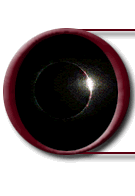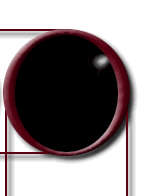|

San
Geronimo Lodge
Dark
Sky Taos Astronomy Program -- Fall 2003
Welcome
to the San Geronimo Lodge Dark Sky Taos Astronomy Program!
By way of introduction let us welcome you here and generally
review the ambitions of this relatively informal program.
The main
goal of the program is for you to enjoy and respect the fabulous
clarity and darkness of the skies here in New Mexico. I would
say that just to look up with admiration would be great, but
if you wish we will then proceed on a simple tour of some
of the major constellation groups of the late summer -- early
autumn skies. The outlines and material following this page
of introduction is for you to use during the program and then
keep. Please feel free to take notes and ask questions. These
materials consist of star charts and outlines and descriptions
of the constellations and telescopic objects we hope to "visit."
The descriptions are from Norton's Star Atlas, the Mullaney/McCall
list of The Finest Deep-Sky Objects and my own. I would suggest
that these outlines will only be used as guides; review them
more carefully at a later date. Enjoy the New Mexico skies
now while we are under them.
We call
this observing session the Dark Sky Taos Astronomy
Program because we have chosen to observe under a moonless
night. The moon does have an adverse effect on the naked-eye
views of both star constellations and the telescopic views
of deep-sky objects as discussed below.
| The
main goal of the program is for you to enjoy and respect
the fabulous clarity and darkness of the skies here in
New Mexico. |
Our procedure
will be to first do a naked-eye tour of the constellations
and then proceed with viewing through the telescope. We'll
use a very manual Classic Celestron 8" telescope. Some
of the very best objects we anticipate viewing are in the
southern constellation of Sagittarius; as such we will probably
view these objects first and then proceed to the others. During
viewing it is best not to experience any "white"
light, as this sort of light will ruin our night vision by
decreasing our pupil size and thereby not allowing our eyes
to be able to see the hazy nuances of some of the dimmer deep-sky
objects. We'll try to provide some red flashlights as the
human eye is much less affected by this color. The general
"style" will be to find an object and then take
turns viewing it though one or both telescopes. During the
viewing the object ought to stay in view as the telescope
has a motorized drive that mimics the rotation of the Earth,
(hopefully!) then guiding accurately on the object in view.
I'll, of course, be there to assist in the viewing technique
and in trying to answer most of your questions. After the
viewing session we can talk further and you can always contact
me by e-mail or visit my photography web sites and even sign
up for the on-line newsletters. We sincerely hope you enjoy
the program. Thanks!
Willis
Greiner and Cheryl Price
http://www.willisgreinerphoto.com/
http://www.astrophotographs.com/
http://www.photofantasia.com/
willis@astrophotographs.com
Please
also visit Cheryl's original fine art watercolor web sites
at:
http://www.cherylpriceoriginals.com/
http://www.purr-sonalitypawtraits.com/
cheryl@cherylpriceoriginals.com

Dark
Sky Taos Astronomy Program -- Fall 2003
Observation
Program -- Constellations
Look
North
Ursa Major
[Big Dipper] Polaris and Ursa Minor [Little Dipper]
Cassiopeia, Perseus and Andromeda / Pegasus
Look
Up (following Milky Way / our home Galaxy)
Cygnus
[Northern Cross]
Summer Triangle of Stars including Deneb (in Cygnus), Vega
(in Lyra) and Altair (in Aquila)
Look
South (continuing to the center of the Milky Way)
Aquila
Sagittarius
Observation
Program -- Telescopic Deep-Sky Objects

Open
star cluster NGC 2158 in Gemini
Open
Star Clusters
Open Star
Clusters are loosely compressed, often irregular groups of
related stars. They are most numerous in our winter sky, and
often are the most impressive objects seen in small telescopes.
They exist in our galaxy and are relatively close by.
Double
Cluster / Perseus
Two magnificent
clusters, visible to the naked eye, and fine objects even
in small telescopes; the diameter of each is about 45'. There
is a fine ruby star near the center of cluster 884. Together
they rate as the finest open star clusters for small telescopes
and are superb in any. With larger instruments only one at
a time can be fitted into the field of view. Both clusters
are about 7000 light years from us
M 11 [Wild Duck Cluster] / Scutum
A grand,
fan-shaped cluster, with a bright star at the apex. Dark structures
to the south. M 11 is the finest open cluster north of -40
degrees for larger instruments. Very rich and compact, it
has a bright star near its center. Here as in M 4 we get the
impression of dark lanes crossing the cluster. Resolved in
a 4-inch at 80x, M 11 is one of the few open star clusters
rich enough to be striking even in a 30-inch telescope.
|
|
|
|
Obscuring
Horsehead Nebula in Orion
|
Emission
Flame Nebula in Orion
|
Diffuse
Emission Nebulae
Diffuse
Emission Nebulae are irregular areas of gas (often seen with
obscuring dark nebulae) that may be the birthplace of new
stars within our galaxy. Common examples are the Great Orion
Nebula and the Lagoon Nebula. The classic Horsehead Nebula
is an example of a dark obscuring nebula. These nebulae are
probably areas of recent activity and great heat.
M 8 [Lagoon
Nebula] / Sagittarius
appears
as a nebulous patch traversed by a large dark lane and with
a scattered open cluster (NGC 6530) to one side. A 3-inch
easily shows the nebula and cluster but not the lane. Very
nice in a 10-inch at 80x.
M 17 [Omega Nebula] / Sagittarius
is the
Horseshoe or Omega Nebula. It can be well seen in a 3-inch
telescope. A 10-inch shows it as a long ray, hooked at one
end and crossed by dark lanes, It is near the densest section
of the Milky Way.

Planetary
Crab Nebula in Taurus
Planetary
Nebulae
Planetary
Nebulae are small gaseous areas within our Milky Way. These
nebulae are commonly thought to be the remnants of super novae
explosions that have occurred over time. Perhaps the most
famous of these nebulae is the hard-to-see Crab Nebula in
the constellation of Taurus. It is thought to the remnant
of a super nova that happened in the 11th century. Many planetaries
have dim central stars, perhaps the white dwarf that the super
nova produced. The central stars of most planetaries are only
visible with large observatory instruments or with long-exposure
photography.
M 57
[Ring Nebula] / Lyra
In the
same constellation that features Vega (one of the 3 Summer
Triangle Stars, and the brightest star now in the sky), M
57 (the famous Ring Nebula) is considered the finest of all
planetary nebulae. Its central hole is seen at 100x with a
3-inch. Excellent with an 8-inch at higher magnifications.
The central stars are only seen with large instruments or
with long-exposure photography.
M 27 [Dumbbell Nebula] / Vulpecula
is easily
seen in a 3-inch. It is much larger than the Ring Nebula,
and has excellent surface brightness. With dark skies its
unique shape is obvious, even with a 3-inch.

Globular
star cluster M 15 in Pegasus
Globular
Clusters
Globular
Clusters are very tightly compressed star clusters which happen
to congregate at the edges of our and other galaxies. It is
through the observation and measurement of the "Cepheid
variable stars" in these clusters that have led us to
the conclusion that our Milky Way is, in fact, a spiral galaxy
much like the Great Andromeda Galaxy.
M 22 /
Sagittarius
is rated
as the finest globular cluster after M 13 in the sky north
of -40 degrees. A 3-inch at 45x shows a fuzzy ball, at at
90x begins to resolve it. It is easily resolved to the center
with an 8 to 10-inch scope. About 10,000 light-years distant
from us, M 22 is one of the nearest globulars.
M 13 / Hercules
is the
finest globular north of -40 degrees. A 3-inch at 90x begins
to resolve it; an 8-inch will resolve the entire cluster and
shows many faint stars.
Multiple
Stars
Multiple
Star systems are common. Many of these systems have related
members (that is, the components orbit about a common point)
and can be seen over time as changing. Some of the systems
contain "eclipsing" stars, which then makes them
appear to change in brightness as one star (perhaps with less
luminosity) passes in front of the other. These motions can
be accurately measured and the distance from Earth then established.
This concept is very important as it relates to the "Cepheid
variable" double star systems. These "Cepheid variables"
have been found in globular clusters in our galaxy and also
in other "island universes." Their existence has
helped to put a scale both on our Milky Way and beyond. Some
(the minority) "double stars" are just lined up
with each other as viewed from Earth and are not related.
Albireo
/ Cygnus
is a beautiful
pair separated by 35". The distinct colors (orange and
blue) seem more obvious in a 3-inch than in a larger telescope.
As is the case with almost all doubles, these stars are related
and rotate about a common point.
Mizar / Ursa Major
is considered
by many to be the finest double for smaller instruments. The
components are both white. This is a great multiple system
for comparing what the naked-eye sees to what the telescope
reveals.

Edge-on
spiral galaxy NGC 891 in Andromeda
Galaxies
Galaxies
contain millions of stars and are "separate island universes."
Our galaxy (the Milky Way) and several others (including the
Great Andromeda Galaxy and the Small and Large Magellenic
Clouds) make up The Local Group of nearby galaxies, the closest
being some 2 million light years from us. The farthest objects
ever recorded (by the Hubble Space Telescope) are galaxies
some 12 billion light years away. Because it has taken 12
billion years for their light to reach us, it can be positively
inferred that our universe is at least 12 billion years old.
M 31 [the
Great Andromeda Galaxy] / Andromeda
is the
finest representative in its class of objects. A 3-inch shows
a featureless but bright ellipse, but a larger instrument
(perhaps a 13-inch) shows some dark structure (indicating
spiral arms seen obliquely) and a small starlike nucleus.
This galaxy, part of the local group, is about 2 million light
years from us.
|






















